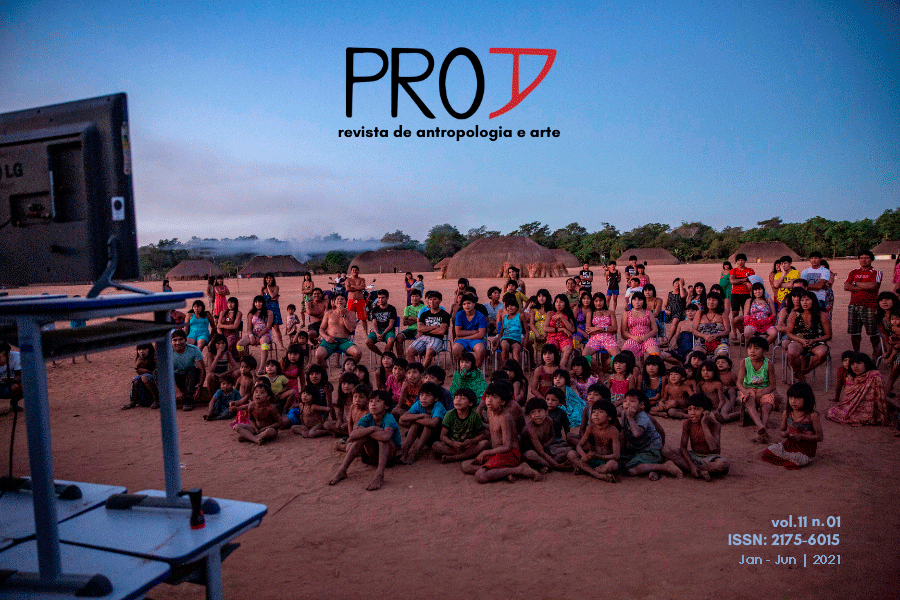Abstract
This article describes, in words and images, the process of making the film "Mokõi Kovoe", a production of the Cultural Association of Indigenous Filmmakers (Ascuri) developed in communities of the Kaiowá people. This is a brief history of how the myth of the origin of the sacred bird Kovoe traveled through different times, media, graphics, and languages, until it was expressed in cinema. The story is structured around two axes: first, the communitarian character of this filmmaking process, providing an experience of retaking the teko joja (harmonious way of being), and second, the relationship between this process and the yvy rendy (spiritual world), with the ñanderu and ñandesy (prayer leaders, shamans, spiritual leaders) as the main guides and agents of this relationship. Immersed in a cosmological landscape in which different worlds are connected by different languages, the images and sounds of Ascuri's cinema - as well as the body-objects that produce and store them - are also integrated as active elements in this field of mediations.
References
BENITES, Eliel. Oguata Pyahu (Uma nova caminhada) no processo de desconstrução e construção da educação escolar indígena da Reserva Indígena Te’ýikue. 2014. 165 f. Dissertação (Mestrado em Educação), Programa de Pós-Graduação em Educação, Universidade Católica Dom Bosco, 2014.
BENITES, Eliel. Tekoha Ñeropu’ã: aldeia que se levanta. Revista NERA, v. 23, n. 52, p. 19- 38, dossiê., 2020.
BRAND, Antônio. J. Os complexos caminhos da luta pela terra entre os kaiowá e guarani no MS. Tellus, Campo Grande, n. 6, 2004, p. 137-150.
CARRION, Dirce.THOMAZINHO, Gabriela (Orgs.). Projeto Teko Joja. União Européia: Projeto Imagem da Vida, 2019.
CHAMORRO, Graciela, CONCIANZA, Misael e PEREIRA, Levi M. Kaiowa Mombe’upy Nhemohembypy Rehegwa— Relatos da cosmogonia Kaiowá: Implicações no campo linguístico e na produção vida social. Espaço Ameríndio. Vol. 10, n.1, p. 10-33, jan/jun, 2016.
CHAMORRO, Graciela. Terra Madura – Yvy Araguyje: Fundamento da palavra guarani. Dourados: Editora UFGD, 2008, 368 p.
GALACHE, Gilmar. KOXUNAKOTI ITUKEOVO YOKO KIXOVOKU – Fortalecimento do jeito de ser Terena: o audiovisual com autonomia. 123f. Dissertação (Sustentabilidade junto a Povos e Territórios Tradicionais) – Centro de Desenvolvimento Sustentável da Universidade de Brasília, 2017.
GRÜNBERG, Friedl Paz (Org.). 2011. Ñande Ypykuéra ñe’engue. Minas Gerais. UFMG.

This work is licensed under a Creative Commons Attribution 4.0 International License.
Copyright (c) 2021 Proa: Revista de Antropologia
